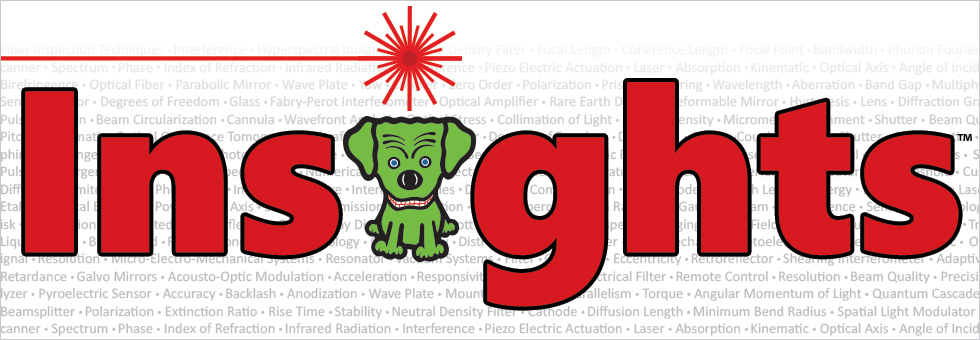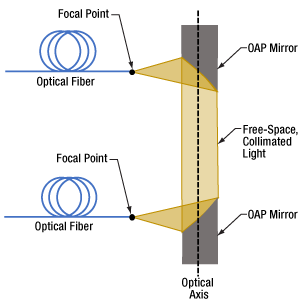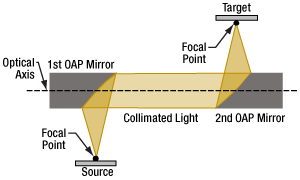Off-Axis Parabolic Mirror Pair Relays Image and Provides Beam Access


Please Wait
Paired OAP Mirrors Can Relay an Image and Make the Beam Accessible

Click to Enlarge
Figure 2: A pair of OAP mirrors can be used to couple light out of one fiber and into another. This provides access to the beam when it is necessary to insert bulk optics into the optical path. Due to the small dimension of the fiber core, light emitted from the fiber end face is similar to a point source.

Click to Enlarge
Figure 1: A pair of OAP mirrors can be used in imaging applications, and/or to relay a beam across a distance.
Relay an Image
A pair of OAP mirrors can act as a relay, as illustrated in Figures 1 and 2, since the light traveling between the mirrors is collimated. Since OAP mirrors are only designed to collimate light from a focal point, or focus collimated light, two mirrors should be used when neither the source nor the image light is collimated (finite conjugate imaging).
The dual OAP configuration facilitates the process of adjusting the distance between mirrors. The leg of collimated light is also convenient for inserting filters and other optical elements into the beam. Another benefit is that distance between the two mirrors can be adjusted to move the focal point across the source and/or target planes without disturbing the alignment of the system.
Provide Access to the Beam in a Fiber Network
A pair of OAP mirrors can be used to create a free-space leg in an optical fiber system, which is one way to provide access to the light beam. The illustration in Figure 2 shows an example of this configuration, which can be useful when filters or other bulk optics need to be inserted into the beam path. The length of the free-space leg can be adjusted without disturbing alignment.
When setting up this system, the fibers' end faces must be aligned so that their cores coincide with the source and target focal points, respectively. The collimated beam paths of both mirrors should be co-linear and completely overlapping.
This configuration is the basis for fiber optic filter / attenuator mounts.
|
Looking for more Insights? |
Date of Last Edit: Dec. 4, 2019 |
| Posted Comments: | |
user
(posted 2022-10-12 14:47:52.383) Would this work with large fiber bundles in an imaging application? jgreschler
(posted 2022-10-14 01:47:28.0) Thank you for reaching out to Thorlabs. Generally speaking OAP mirrors are suitable for fiber coupling, however every application is different. I have reached out to you directly to discuss the specifics of this and whether an OAP will work for your experiment. |
 Products Home
Products Home Paired OAP Mirrors
Paired OAP Mirrors